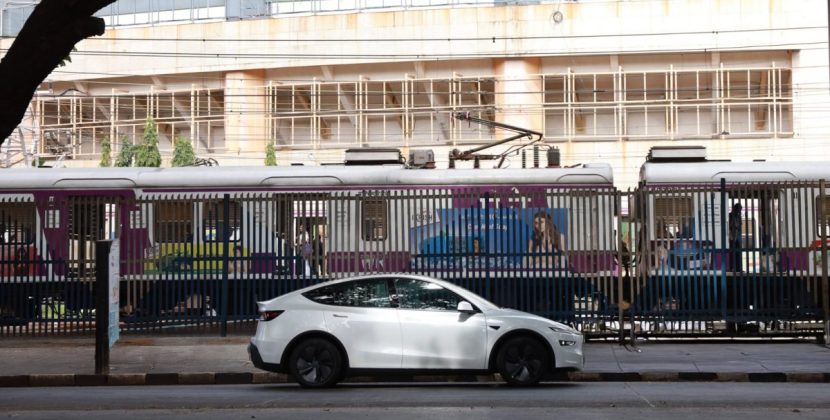
The prime accused, Abhishek Yadav, was arrested from Jhanshi, UP. The team also seized 11 smartphones, 6 ATMs, one laptop, and numerous bank account chequebooks from the accused.
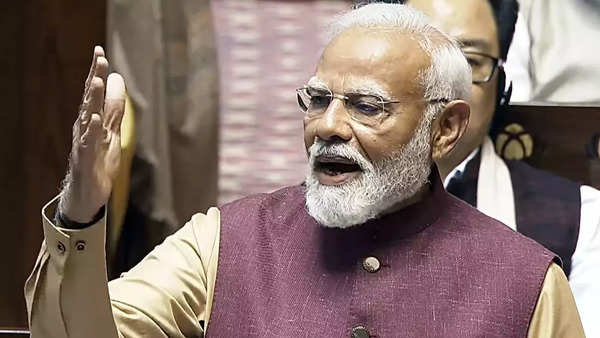
The prime accused, Abhishek Yadav, was arrested from Jhanshi, UP. The team also seized 11 smartphones, 6 ATMs, one laptop, and numerous bank account chequebooks from the accused.
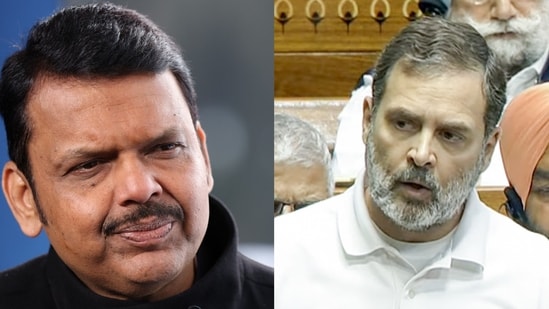
Live
India News Live: Stay informed with our live blog covering India’s latest in politics, economy, crime, and general news. Get real-time updates on political developments, financial trends, crime reports, and important events across the country. Stay connected with the most crucial stories shaping India, all in one place.
Latest news on February 7, 2025: Maharashtra chief minister Devendra Fadnavis called Rahul Gandhi’s allegations baseless.
India News Live: Get real time updates on the latest happenings across India. From key political shifts and government decisions to economic developments and crime reports, we bring you real-time information as it unfolds. Our coverage also includes general news, spotlighting significant events and issues impacting daily life. Disclaimer: This is an AI-generated live blog and has not been edited by Hindustan Times staff.…Read More
Follow all the updates here:
Feb 7, 2025 3:26 PM IST
Feb 7, 2025 3:23 PM IST
Feb 7, 2025 2:56 PM IST
Feb 7, 2025 2:52 PM IST
Feb 7, 2025 2:40 PM IST
Feb 7, 2025 2:21 PM IST
Feb 7, 2025 2:19 PM IST
Feb 7, 2025 2:16 PM IST
Feb 7, 2025 2:12 PM IST
Feb 7, 2025 2:10 PM IST
Feb 7, 2025 1:55 PM IST
Feb 7, 2025 1:39 PM IST
Feb 7, 2025 1:35 PM IST
Feb 7, 2025 12:43 PM IST
Feb 7, 2025 12:25 PM IST
Feb 7, 2025 12:01 PM IST
Feb 7, 2025 11:27 AM IST
Feb 7, 2025 11:16 AM IST
Feb 7, 2025 11:08 AM IST
Feb 7, 2025 10:37 AM IST
Feb 7, 2025 10:31 AM IST
Feb 7, 2025 10:23 AM IST
Feb 7, 2025 9:02 AM IST
Feb 7, 2025 8:36 AM IST
Feb 7, 2025 8:36 AM IST
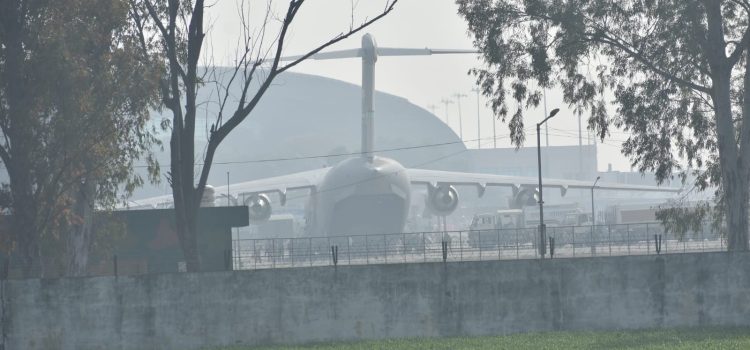
The recent deportation of 104 illegal Indian immigrants by the United States likely cost the country around $1 million for the flight used in the process, new agency AFP reported. Data suggests that military flights can be over three times more expensive than civilian flights.
The Donald Trump administration has started using military aircraft for deportations, signalling its commitment to removing undocumented migrants.
Donald Trump, who campaigned on a pledge to execute the largest deportation operation in US history, has primarily focused on migrants from Latin America, but some are also being sent back to distant countries.
On Wednesday, a US Air Force cargo plane landed in Amritsar, India, carrying 104 Indian nationals who had entered the US illegally. This flight is believed to be the first instance of a military aircraft being used for deportation to India.
Images captured indicate that the plane used was a C-17A Globemaster III, a large military aircraft designed for transporting troops, vehicles, and supplies.
The Globemaster III, a key asset of the US Air Force, has been in service since 1995 and has been deployed in various military operations worldwide.
Military flights are much more expensive to operate than the charter flights that Immigration and Customs Enforcement (ICE) also uses for deportations. As per ICE data from 2021, the cost of a charter flight is $8,577 (about ₹7.50 lakh) per flight hour, though transporting high-risk migrants may increase costs.
In contrast, using a C-17 military aircraft for transport operations costs $28,562 (around ₹24.98 lakh) per hour, according to documents from the US Air Mobility Command cited by AFP.
Unlike commercial planes, military flights follow different routes due to airspace sensitivities in other countries and refuel at military bases instead of civilian airports.
Data from Flightradar24, a flight-tracking site, shows that the deportation flight took off from Marine Corps Air Station Miramar in San Diego, California, at 1330 GMT on Monday. The plane then flew west to Hawaii, crossed the Pacific Ocean, navigated through the Luzon Strait near the Philippines, passed between Indonesia and Malaysia, and took a detour south into the Indian Ocean, stopping at the US air base on Diego Garcia, a remote island.
From Diego Garcia, it flew thousands of miles north to Punjab in India landing on Wednesday afternoon, more than 43 hours after departing from California.
Factoring in the return journey, even a conservative estimate suggests the flight cost exceeded $1 million, meaning each detainee’s transport costs over $10,000 ( ₹8.74 lakh).
In contrast, a one-way commercial flight from San Francisco to New Delhi costs approximately $500 ( ₹43,734) in economy class and around $4,000 ( ₹3.5 lakh) in business class.
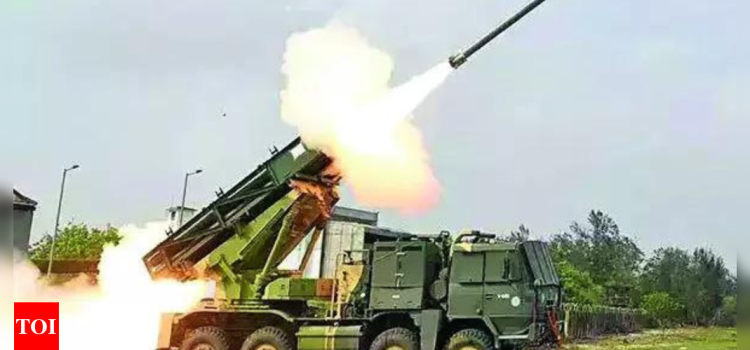
NEW DELHI: The defence ministry on Thursday inked contracts worth Rs 10,147 crore with state-owned Munitions India Limited and private sector company Economic Explosive Limited, part of the Nagpur-based Solar Group, to supply lethal ammunition for the indigenous Pinaka multi-launch artillery rocket systems of the Army.
The deals are for high-explosive pre-fragmented extended rockets for about Rs 5,700 crore and area denial munitions for around Rs 4,500 crore, which will cater for the 10 Pinaka regiments already ordered by the over 11-lakh strong Army, as was reported by TOI last month.
The contracts, signed in the presence of defence secretary Rajesh Kumar Singh, were cleared by the PM-headed cabinet committee on security on Jan 29. A contract for upgrades in the ‘Shakti’ software was also inked with Bharat Electronics Limited (BEL).
The high-explosive pre-fragmented rockets have an extended strike range of 45-km to “strike deep into enemy territory with precision and lethality”. The area denial munitions, which can be launched to 37-km, have the capability to saturate a target area with multiple bomblets, including anti-tank and anti-personnel minelets. “The procurements will mark a significant milestone in the modernisation of the artillery rocket regiments, bolstering the Army’s firepower by enabling precise and long-range strikes,” an official said. tnn
Check out the latest news about Delhi Elections 2025, including key constituencies such as Kalkaji, Karol Bagh, Tilak Nagar, New Delhi, Laxmi Nagar, Badarpur, Ghonda, Krishna Nagar, Model Town, Rithala, Trilokpuri, Najafgarh, and Matia Mahal.
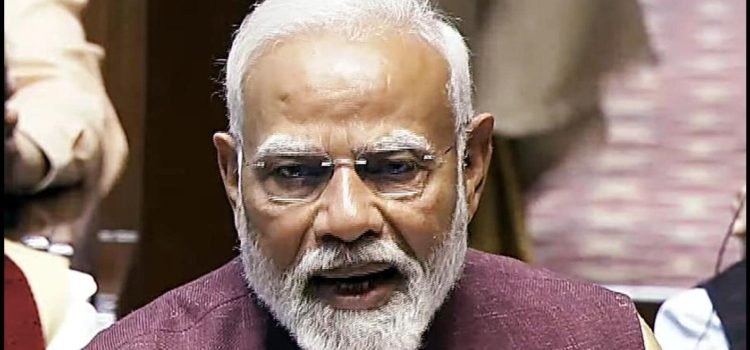
Prime Minister Narendra Modi on Thursday attacked the Congress for not abiding by the spirit of the Constitution and showing scant regard for freedom of speech, pointing out that the first amendment was brought “by a stopgap government” that sought to curtail freedom of speech, and listed how various artistes bore the brunt of excesses during the Emergency.
Speaking in the Rajya Sabha during the motion of thanks to the President’s Address, the PM said, “A stop-gap government amended the Constitution to curb freedom of speech…It was not even an elected government…”
The PM was referring to the first amendment to the Constitution in 1951, introduced by then PM Jawaharlal Nehru. The amendment added ‘reasonable’ before the word “restrictions” as the reasonability of a restriction was to be determined by a court of law. It also added categories such as “public order”, “friendly relations with foreign states”, “security of the State” and “incitement to an offence” as restrictions on the freedom of speech and expression.
Even as the Opposition protested, the PM went on to accuse the Congress of trampling on the “spirit of the Constitution” by imposing the Emergency, “Satta ke sukh; shahi parivaar ke ahankaar ke liye desh ko jail khana bana diya… (for the sake of power and for appeasing the ego of the royal family, the whole country was turned into a prison)…”
In his 90-minute speech, the PM criticised the Congress for its policies, which he said resulted in leaving important projects hanging, and slowing economic growth.
The PM said the word Constitution did not suit Congress as it handcuffed and chained leaders such as George Fernandes during the Emergency and did not even spare artistes.
“A workers’ strike was held in Mumbai. During that strike, the famous poet Majrooh Sultanpuri recited a poem…he was put in jail. Famous actor Balraj Sahni was also jailed only because he participated in a protest. (Actor) Dev Anand was asked to support the Emergency…when he refused his film were banned on Doordarshan,” the PM said.
He also made a mention of how musician Hridaynath Mangeshkar was banned from All India Radio (AIR) for reciting a poem on Hindutva idealogue VD Savarkar.
The PM attacked the Congress of disrespecting the framers of the Constitution, particularly, the country’s first law minister, BR Ambedkar. He alleged the Congress “hated Ambedkar and showed anger towards him and everything he said. He accused the Congress of conspiring against him to make him lose two general elections.
“…They did not consider Babasaheb worthy of the Bharat Ratna. Aaj jab unhe Jia Bhim bolna padta hai, unke muh sookh jate hai (today when they have to say Jai Bhim, their mouth run dry) …” he said.
In the last session, the Opposition had attacked the government, particularly Union home minister Amit Shah, over the latter’s comments on Ambedkar during a speech in Parliament.
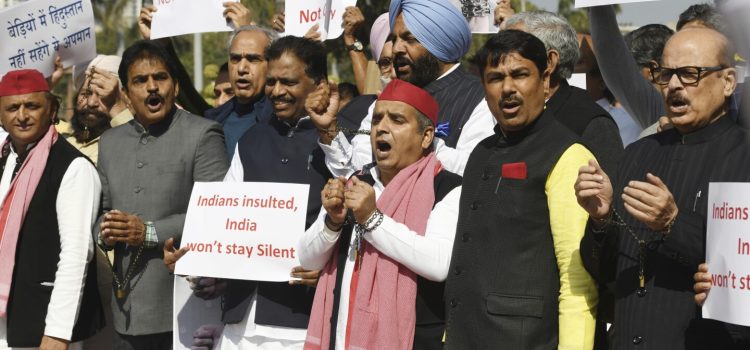
NEW DELHI (AP) — India’s Parliament was disrupted Thursday as opposition lawmakers protested the alleged mistreatment of 104 Indian immigrants deported by the United States.
A U.S. military plane carrying Indian migrants arrived Wednesday in a northern Indian city, the first such flight to the country as part of a crackdown ordered by President Donald Trump’s administration.
Renuka Chowdhury, a lawmaker in the Congress party, said the deportees were “handcuffed, had their legs chained and even struggled to use the washroom.” Her colleague, Gaurav Gogoi, called it “degrading.”
Parliament adjourned as the opposition chanted slogans and demanded a discussion about flights.
The protests mirrored concerns after a contentious deportation flight to Brazil on Jan. 25 prompted that country’s government to seek an explanation for the “degrading treatment” of 88 passengers.
U.S. civilian authorities also shackle migrants by their ankles and wrists, but deportation flights to India are rare. U.S. Immigration and Customs Enforcement had three flights to the city of Amritsar last year, according to Witness at the Border, an advocacy group that tracks flight data.
The Trump administration’s use of military aircraft for deportations to countries including Guatemala and Ecuador is a departure from previous practice, which relied on ICE’s use of chartered and commercial planes.
Parliament Speaker Om Birla tried to calm the lawmakers, saying the transportation of the deportees was a matter of U.S. foreign policy and that the U.S. “also has its own rules and regulations.”
One deportee, Jaspal Singh, said the immigrants’ handcuffs and leg chains were taken off only at the Amritsar airport in India.
Singh, 36, said they initially thought they were being taken to another camp in the U.S. and only found out about their deportation once on the plane. “The flight was into 8-9 hours and an officer informed (us) that we are being deported” to India, he said.
Opposition lawmakers, including Congress leader Rahul Gandhi, also protested outside the Parliament as they demanded a response from the government. Some wore handcuffs and carried placards that read: “Humans, not prisoners.”
“Indians deserve Dignity and Humanity, NOT Handcuffs,” Gandhi wrote on the social media platform X.
Gandhi uploaded a video showing another deportee, Harvinder Singh, as saying they were handcuffed and their feet chained for 40 hours. “We were not allowed to move an inch from our seats. It was worse than hell,” he said.
Later Thursday, India’s External Affairs Minister Subrahmanyam Jaishankar told the Parliament’s upper house that U.S. regulations have allowed for the use of restraints since 2012, both on military and civilian flights. He said the U.S. authorities have informed them that women and children are not restrained.
“There has been no change, I repeat, no change, from past procedure for the flight undertaken by the U.S.” on Wednesday, he said.
Jaishankar said the government was engaging the U.S. authorities to “ensure that the returning deportees are not mistreated.”
Indian Prime Minister Narendra Modi is to visit Washington next week. Trump and Modi discussed immigration in a phone call last week and Trump stressed the importance of fair bilateral trade and India buying more American-made security equipment.
A spokesperson at the U.S. Embassy in New Delhi said enforcing immigration laws was critical for the country’s national security and public safety.
“It is the policy of the United States to faithfully execute the immigration laws against all inadmissible and removable aliens,” Christopher Elms said.
Indians were arrested more than 14,000 times for illegally entering the U.S. on the Canadian border during a 12-month period that ended Sept. 30. That amounted to 60% of all arrests along that border and more than 10 times the number two years ago. Indians were arrested more than 25,000 times on the Mexican border during that time.
Jaishankar, India’s External Affairs Minister, told Parliament that 15,668 Indian nationals have been deported back to India from the U.S. since 2009.
Hussain reported from Srinagar, India.
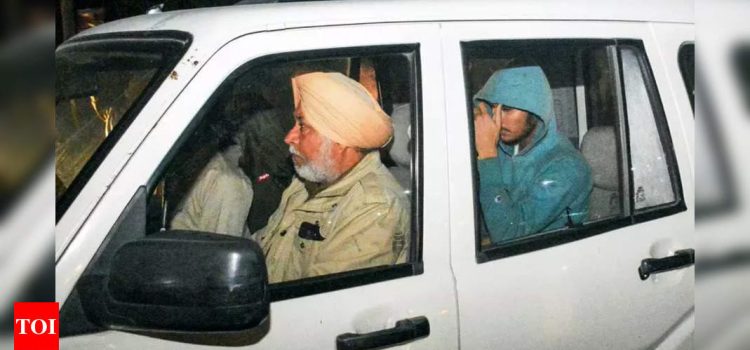
Hyderabad: Amid the recent deportation of 104 people, Indian students pursuing higher education in the US are an edgy lot, as scrutiny from law enforcement agencies has intensified. Many students TOI spoke to said random checks have become commonplace of late, with “officers in uniform” demanding to see the students’ ID cards or check their work authorisation documents — in case they are on Optional Practical Training (OPT).
While an OPT — initially issued for a period of one year post-college — allows students to work for the stipulated period, those on F1 visa have permission to work for only 20 hours a week at on-campus jobs. But, students often breach this work-time cap to earn extra bucks.
Since a majority of the students pick up part-time work at local grocery stores, gas stations and eateries, they said the recent checks are largely concentrated in these locations. Most of them take up these jobs for an average pay of $7-$10 per hour.
Students confessed that these checks have intensified fears of deportation within the community. However, they remained uncertain about the identity of the officials. Some claimed they were questioned by local police officers, while others said they were “interrogated” by agents from US Immigration and Customs Enforcement (ICE) and US Customs and Border Protection (USBP). Repeated emails to ICE and USBP went unanswered.
“Last week, officers came in and began questioning the staff at the restaurant where I work six hours every day after college. They asked for my college ID. Fortunately, I was coming out of the restroom, so I told them I was just there to use the facility. My employer backed me,” said an Indian pursuing a masters in cybersecurity in Atlanta. “The experience was so petrifying that I resigned the very next day,” the student, who worked as a waiter to fund his expenses, added.
A student pursuing Master’s in computer science in New Jersey said he was quizzed about his visa status and student ID, while at work at a local gas station. “My employer, who is from my hometown in Nalgonda, intervened and told them I was his distant relative and had just arrived in the US for the Jan intake,” he shared.
A 26-year-old had a run-in with law enforcement officers while he was at a restaurant in Atlanta to pick up a delivery order. “I told him I was just there to eat,” the student said, adding that living under constant fear has become the new norm. “I am always scared and constantly wondering if I should quit the job,” said the student.
Given the current situation, experts are advising Indian students to avoid engaging in unauthorised work. “While we understand that managing expenses is a major concern, it should not come at the cost of their education and legal status in the US. The scrutiny is only going to increase hereon,” said Ravi Lothumalla, a Texas-based expert in university admissions.
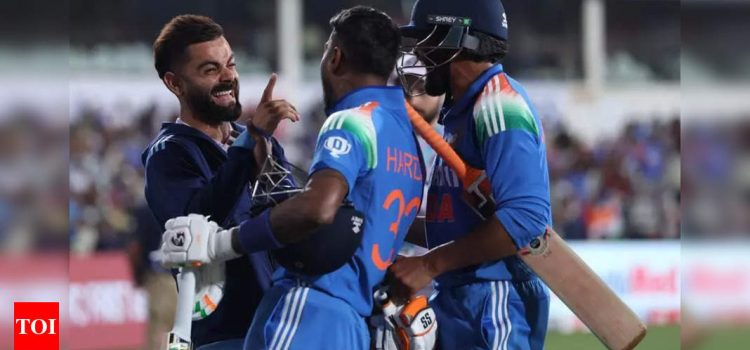
Check out the latest news about Delhi Elections 2025, including key constituencies such as New Delhi, Kalkaji, Jangpura, Patparganj, Rohini, Chandni Chowk, Rajinder Nagar, Greater Kailash, Okhla, and Dwarka.
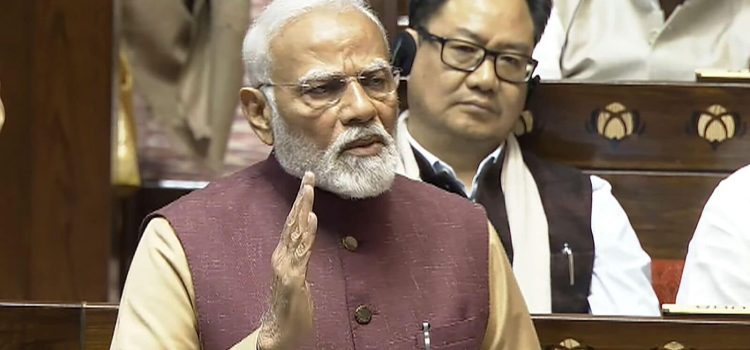
New Delhi: Prime minister Narendra Modi on Thursday said the middle-class is confident and determined to anchor India’s journey to become a developed nation.
He was speaking in the Rajya Sabha during the motion of thanks to the president’s address. The statement comes days after the union budget for FY26 announced exemption of income tax for salaried people earning up to ₹12 lakh per year.
“The middle class today is filled with confidence, which is unprecedented and greatly strengthens the nation,” said Modi, adding that the Indian middle class is determined and fully prepared to realize the vision of a developed India.
Emphasising that the government is committed towards the neo-middle class and middle class, the prime minister said their aspirations are a driving force for the country’s progress, providing new energy and a solid foundation for national development. He highlighted efforts to enhance the capabilities of the middle and neo-middle classes.
He noted that a significant portion of the middle class has been exempt from paying taxes in the current budget. In 2013, the income tax exemption limit was up to ₹2 lakh, but it has now been increased to ₹12 lakh, he added.
The prime minister further said individuals over 70 years of age, from any class or community, are benefiting from the Ayushman Bharat scheme, with significant advantages for the elderly in the middle class.
He said India is now seen as one of the fastest-growing countries, and the nation’s economy is expanding significantly.
The Economic Survey for FY25 has projected a growth rate of 6.3-6.8% for FY26 on the back of a “strong external account, calibrated fiscal consolidation and stable private consumption”. It also said that domestic growth levers will be more important than external ones in the coming years for the Indian economy.
Outlining achievements and initiatives under the NDA government, Modi said that India has become the world’s second-largest mobile phone producer, transitioning from being predominantly an importer to an exporter of mobile phones.
On India’s achievements in defence manufacturing, he said that defence exports have increased 10-fold over the past decade. He also highlighted the tenfold increase in solar module manufacturing. He added that India is now the world’s second-largest steel producer while machinery and electronic exports have seen rapid growth over the past decade.
The prime minister also noted that toy exports have more than tripled, and agrochemical exports have increased significantly.
The union budget also outlined a plan to further develop the toy manufacturing in the country. Building on the National Action Plan for Toys, the government plans to implement a scheme to make India a global hub for toys which will focus on development of clusters, skills, and a manufacturing ecosystem that will create high-quality, unique, innovative, and sustainable toys that will represent the ‘Made in India’ brand.
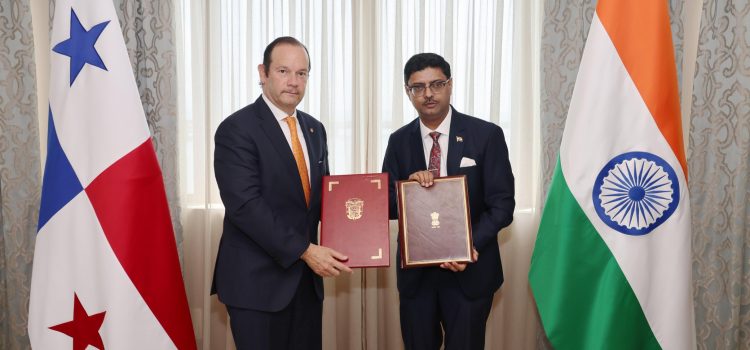
India and Panama signed an important Memorandum of Understanding (MoU), aimed at enhancing bilateral relations through infrastructure and community development projects. The agreement, signed by Panamanian Foreign Minister Javier MartÃnez-Acha and Indian Ambassador Sumit Seth on Feburary 5, 2025, focuses on Indian grant assistance for the creation of critical infrastructure including roads and community centers, as well as improvements in education and health.
The MoU outlines India’s support for Panama in implementing ‘quick impact projects’ (QIP), which are expected to improve physical and social infrastructure in Panama. These initiatives will help enhance local communities through better roads, educational facilities, healthcare services, and more.
During the ceremony Foreign Minister MartÃnez-Acha thanked the government of India represented by Ambassador Sumit Seth for the initiative and the impetus to make it a successful conclusion.
This agreement marks an important milestone in strengthening the relationship between India and Panama, both of which have already signed over seven bilateral agreements. Foreign Minister MartÃnez-Acha highlighted that the MoU reflects the importance Panama places on its relationship with India. The agreement also builds on India’s long-standing commitment to assist Panama through its Technical and Economic Cooperation Program, offering Panamanian citizens opportunities in fields like technology, science, and health.
India’s engagement with Panama has been growing, especially since the visit of Indian Minister of Foreign Affairs, Pabitra Margherita, last year. This visit, which was the first ministerial-level trip from India in over a century, helped deepen the bilateral ties between the two countries. During the visit, both nations discussed areas for further cooperation in trade, education, and technology. Furthermore, the significant role of the Indian diaspora, with around 15,000 members, in Panama’s economic and cultural life was acknowledged as an essential part of this partnership.
For India, Panama is a key partner in Latin America, especially because of its strategic location near the Panama Canal, a critical hub for global trade. By strengthening ties with Panama, India gains access to important markets and opportunities in the region, aligning with its broader foreign policy goals of expanding influence and trade in Latin America.
Comments